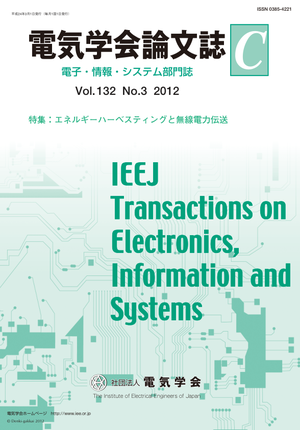Genetic Network Programming-Sarsa with Multi-Subroutines for Trading Rules on Stock Markets
Genetic Network Programming-Sarsa with Multi-Subroutines for Trading Rules on Stock Markets
カテゴリ: 論文誌(論文単位)
グループ名: 【C】電子・情報・システム部門
発行日: 2012/03/01
タイトル(英語): Genetic Network Programming-Sarsa with Multi-Subroutines for Trading Rules on Stock Markets
著者名: Yang Yang (The Graduate School of Information, Production and Systems, Waseda University), Yunqing Gu (The Graduate School of Information, Production and Systems, Waseda University), Shingo Mabu (The Graduate School of Information, Production and Systems,
著者名(英語): Yang Yang (The Graduate School of Information, Production and Systems, Waseda University), Yunqing Gu (The Graduate School of Information, Production and Systems, Waseda University), Shingo Mabu (The Graduate School of Information, Production and Systems, Waseda University), Kotaro Hirasawa (The Graduate School of Information, Production and Systems, Waseda University)
キーワード: genetic network programming,multi-subroutines,evolutionary algorithms,reinforcement learning,stock trading model,technical index
要約(英語): In this paper, a stock trading model is proposed using a graph-based evolutionary algorithm named Genetic Network Programming-Sarsa (GNP-Sarsa) with multi-subroutines. The method is developed for discovering the frequent transitions of GNP, which can be seen as the repetitive subgraphs, i.e., building blocks with useful knowledge over the entire graph structure, and modularizing them as subroutines. The important points of the subroutines mechanism are as follows: First, the nodes and node connections discovered in the subroutines are reused to create effective trading rules. Second, the evolution can be achieved so quickly by narrowing the search space with subroutines. Last, as the kinds of subroutines increase, the generalization ability is improved since more generalized frequent transitions of GNP, i.e., building blocks are found instead of precisely modeling the training data, which leads to the overiftting problem. The following two experiments are discussed: 1) varying the number of subroutine nodes in the main GNP and 2) varying the kinds of subroutines to be generated. Simulation results on the stock markets show that the proposed method can generate more efficient and generalized trading models and obtain much higher profits.
本誌: 電気学会論文誌C(電子・情報・システム部門誌) Vol.132 No.3 (2012) 特集:エネルギーハーベスティングと無線電力伝送
本誌掲載ページ: 439-447 p
原稿種別: 論文/英語
電子版へのリンク: https://www.jstage.jst.go.jp/article/ieejeiss/132/3/132_3_439/_article/-char/ja/
受取状況を読み込めませんでした


